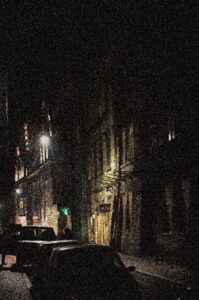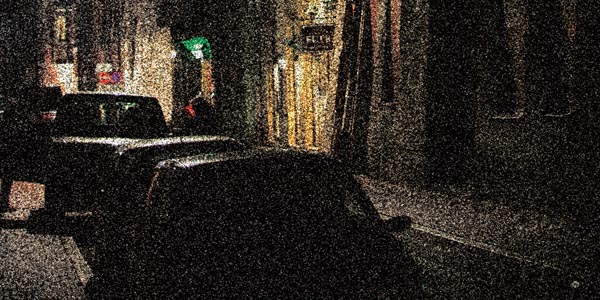Low light applications impact on video quality, and always have done. The best solution is always to add more light, but this isn’t always practicable.Despite new processing functions which are claimed to deliver clear images in minimal light conditions, the reality is that low light causes unwanted degradation and noise, plus a lack of contrast and detail. In an industry where IVA has become a ‘must-have’ feature, how does low light impact on accuracy?
Security-based video surveillance is required to be fully operational, accurate and effective 24 hours a day, seven days a week. It needs to be able to deliver a high level of security when risk levels are at their highest. In short, when the risk of incidents and events increases, end users’ reliance on their investment into modern and smart video surveillance becomes critical. Their expectations are that when the incidents they wish to prevent occur, the solution they’ve been sold will be capable of delivering the protection they require.
In many risk-based scenarios involving crime, attacks or criminal activity, the threat increases when light levels fall. It’s a simple formula. Criminals want to evade detection, and therefore there is less chance of them being spotted by passers by or persons at a site if it is dark. Additionally, most sites are less populated – or even unpopulated – during the hours of darkness.
The practice of flooding an area with light has fallen from favour for good reason. Firstly, concerns about light pollution have meant that sites need to take their responsibilities seriously. Secondly, lighting up a site throughout all periods of darkness is not a cost-effective solution. Finally, those viewing a well illuminated site will often assume that any activity is innocuous, as a well lit site is indicative of being occupied and operational.
As a result, video surveillance has to contend with delivering video streams for security purposes – detection and identification – in circumstances that are often far from ideal. Often light levels will be minimal or ambient. This means supplementary illumination will be necessary, as will a wide range of considerations to ensure the cameras can operate to an acceptable standard.
A combination of approaches is needed: the installation of additional switched white light or infrared illumination, specification of cameras with credible and proven low light performance, appropriate lens specification, etc.. The right approach can deliver usable video streams, but in a sector increasingly dependent upon IVA and smart technologies, is it enough?
Low light and high resolution
Today’s advanced cameras typically have three features that are universal: high resolutions, low light processing and intelligent video analytics. When it comes to low light processing, names are used which imply the technology is light-scavenging, utilising tiny amounts of ambient illumination to boost image quality. Claims are made about the delivery of clean and crisp colour images in very light levels, often down to hundredths of decimal places. Whilst these technologies do offer benefits, they might not always be enough.
 Light is an essential element for the generation of video images. If there is no light, there is no video image. There is no way of getting around that fact. If no light falls onto the chipset, no signal can be produced. As resolutions increase, so the size of the pixels on the image sensor decrease. It stands to reason that a 1/2 inch 4K UHD 3840 x 2160 sensor will have pixels a quarter the size of a 1/2 inch HD 1920 x 1080 sensor. This drastically decreases the surface area gathering light, meaning more light is required.
Light is an essential element for the generation of video images. If there is no light, there is no video image. There is no way of getting around that fact. If no light falls onto the chipset, no signal can be produced. As resolutions increase, so the size of the pixels on the image sensor decrease. It stands to reason that a 1/2 inch 4K UHD 3840 x 2160 sensor will have pixels a quarter the size of a 1/2 inch HD 1920 x 1080 sensor. This drastically decreases the surface area gathering light, meaning more light is required.
Light boosting technologies don’t create more light. Instead, they use advanced algorithms to boost brightness and contrast, enhancing detail and colour accuracy. In order to compliant with HD and 4K UHD standards, the ability to use slow shutters or frame integration is limited, so the algorithms rely on amplifying certain parameters.
If an image contains noise or unwanted data, this will also be boosted. Filtering can only do so much. The human brain is excellent at making sense of visual elements, so these technologies work well for a person reviewing footage, but IVA lacks that degree of intuition. Therefore, relying on claims of low light performance is not always the best approach.
Analytics issues
Of course, it’s all too easy to point at today’s cameras with their outstanding performance in low light applications. If a camera can operate in 0.001 lux, how much light is required? As explained above, things are not always that clear cut.
Analytics algorithms are advanced and complex, and computationally they are streets ahead of where IVA technology was a few years ago. However, they rely on pixel values to assess what constitutes change, shapes, edges, patterns and trends.
The algorithms are becoming more intelligent, and the growth of deep learning techniques is impacting on performance and accuracy in the higher end (and higher priced) solutions, but the fact remains that at the very heart of image recognition and analysis is pixel values.
It is the variance in pixel values that the algorithm uses. A block of pixels that only vary by a very small percentage will be treated as a static element. There will be an allowance for varying ambient light, reflections, shadows, camera processing and noise, etc.. If low light conditions result in a lack of contrast, an analytics engine will struggle to define activity with a high level of certainty.
An operator may well be able to see motion and recognise that an intruder is on site, but it doesn’t automatically mean that the analytics engine will. The human brain is at the pinnacle of engineering; if a manufacturer could get anywhere close to replicating the performance of the human eye and brain, they would eliminate much of the video-based industry overnight! Never assume that because you can see something, an algorithm will also see it in the same way.
Additionally, an algorithm will see everything in an image in the same way. The advances in AI will teach software to understand image noise and other visible processing abberations such as gain adjustments, differentiating them from rain or smoke or other environmental conditions. However, today’s mainstream cameras and IVA offerings don’t enjoy that level of discrimination yet.
In summary
IVA is improving, and will continue to improve as video surveillance manufacturers employ more advanced algorithms and exploit AI techniques. However, IVA is not perfect, and it isn’t about to become perfect in the near future.
By understanding the way in which IVA is impacted by low light conditions, integrators and installers will be better equipped to design more efficient and effective solutions for their customers.

